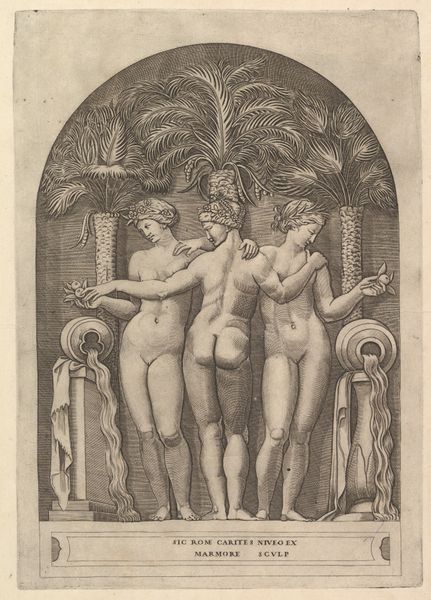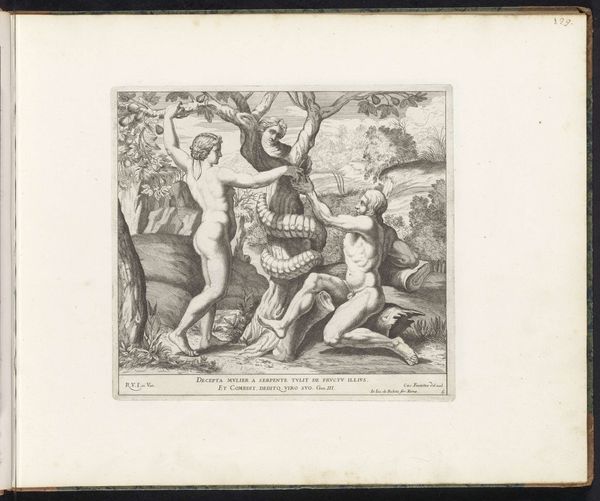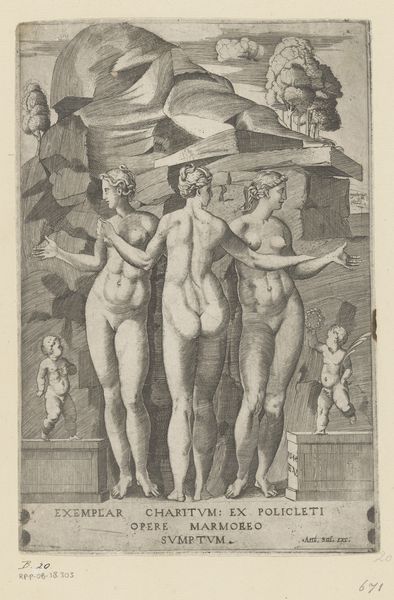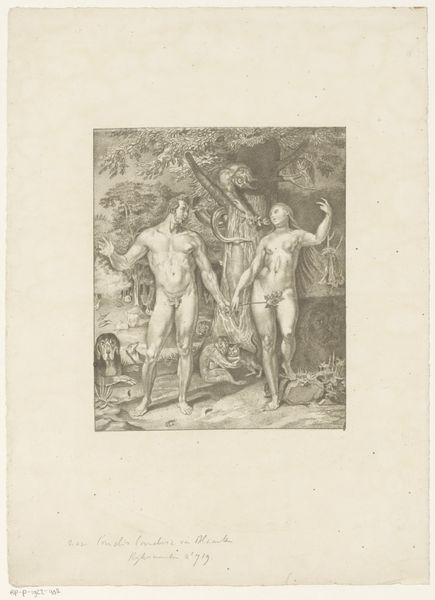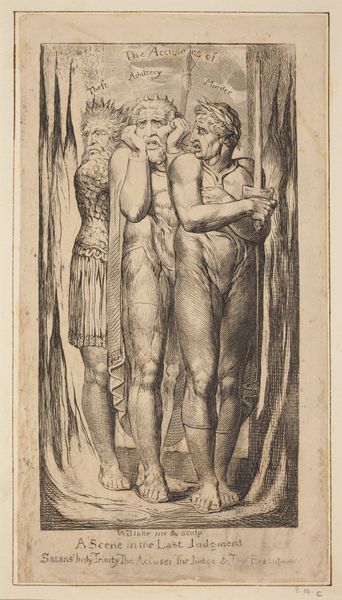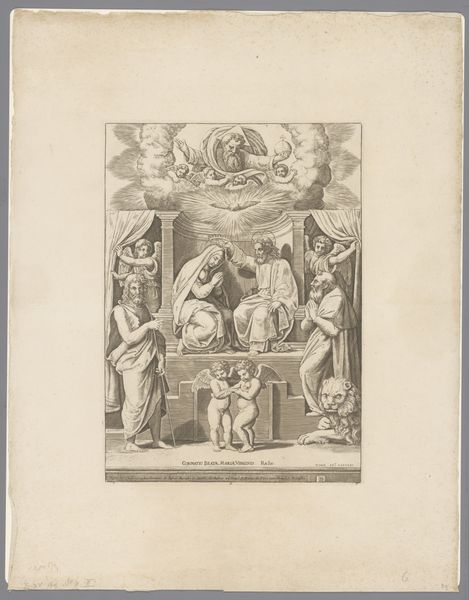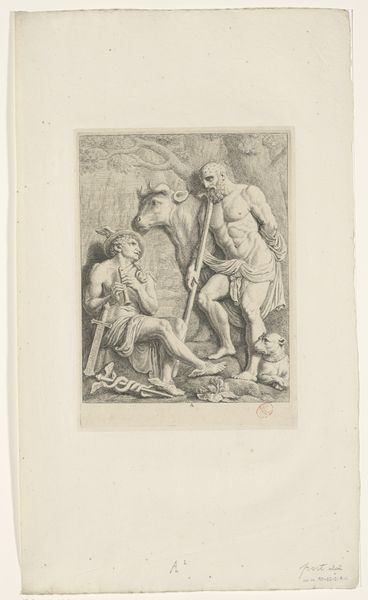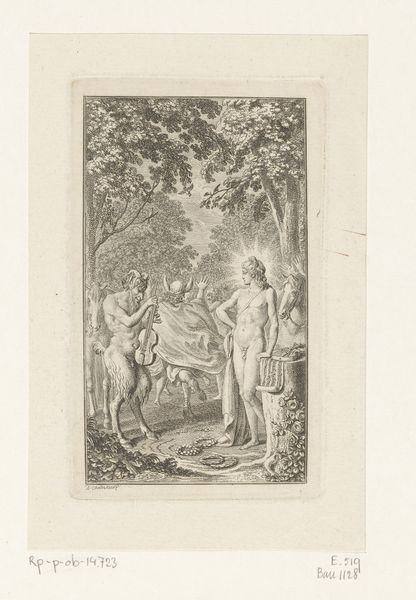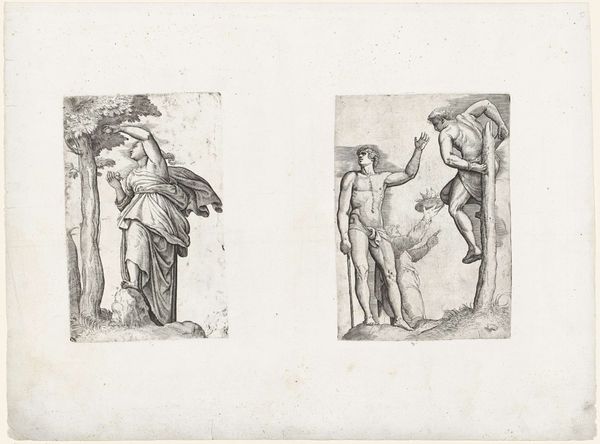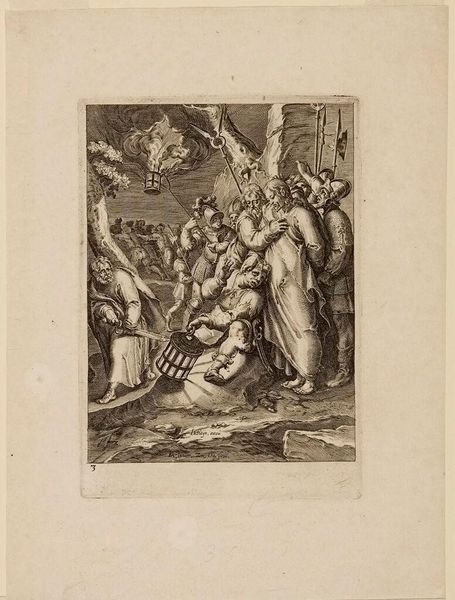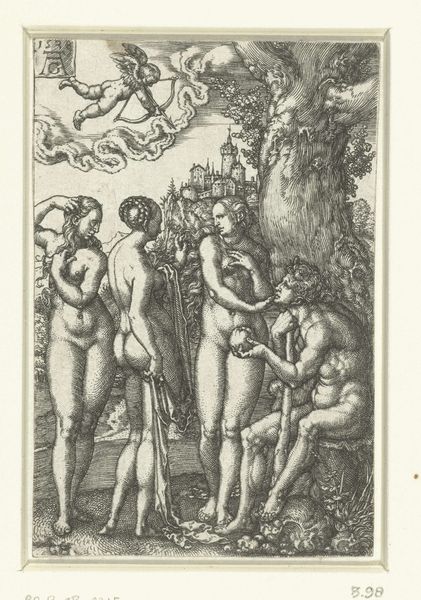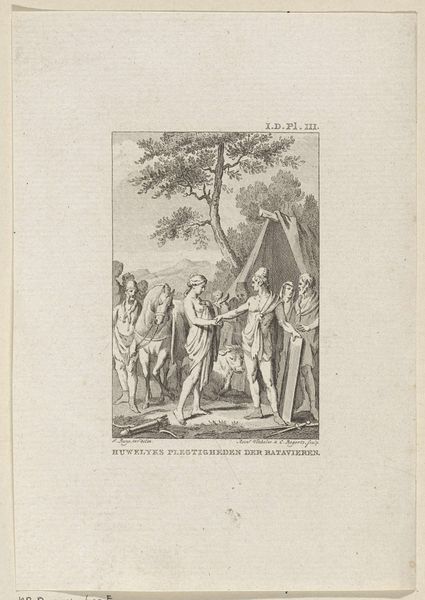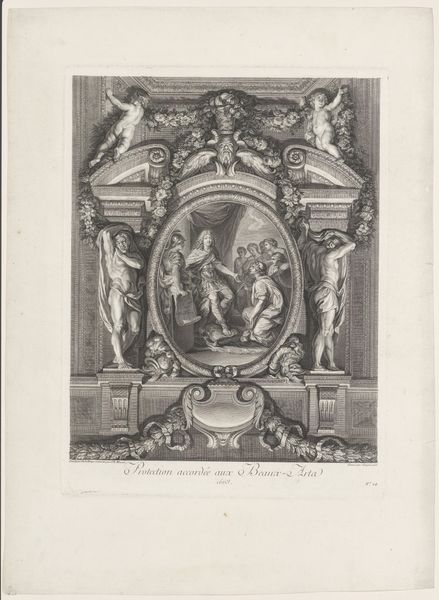
print, engraving
#
allegory
# print
#
figuration
#
italian-renaissance
#
nude
#
engraving
Dimensions: height 352 mm, width 248 mm, height 541 mm, width 381 mm
Copyright: Rijks Museum: Open Domain
Editor: This engraving, "The Three Graces," dates back to 1556, created by an anonymous artist, now residing in the Rijksmuseum. The depiction of nude women feels classical, yet there's a certain formality in the composition, a restraint even. What strikes you about this work? Curator: The piece immediately positions itself within the ongoing dialogue surrounding the classical ideal and its Renaissance revival. The “Three Graces” motif, common in antiquity, signifies beauty, charm, and joy, but it also served as a potent visual argument. Given this work was produced as a print and therefore likely accessible to many audiences in its time, what societal values or philosophical perspectives could the artist be engaging with? Editor: Hmm, that's interesting. Maybe it's an idealized vision of feminine beauty meant to encourage virtue or, conversely, to display wealth and refinement to those with classical learning? Is it a symbol of something more significant in that cultural context? Curator: Exactly! Remember, Renaissance art was deeply intertwined with humanist philosophy. Prints like this could serve various social functions. Was it challenging religious dogma, championing secular knowledge, reinforcing cultural values, or possibly all the above? Consider who commissioned and consumed these images; their perspectives profoundly influence our interpretation. Editor: That is helpful. Considering it’s a print, its accessibility allows for more discussions to happen across social classes during that era. It democratizes the consumption of beauty and ideal. Curator: Precisely. The engraving medium facilitated wider circulation, extending its impact and influence to diverse audiences. How does understanding its place within a broader historical and social context reshape your initial understanding? Editor: I initially saw it as just a beautiful representation of a classical motif. But now, I recognize how the socio-political influences can also add layers of meaning and influence, like an echo throughout the society it's supposed to portray. Curator: And that recognition enriches our appreciation, making this engraving much more than a formal exercise! Thank you for those thoughts!
Comments
No comments
Be the first to comment and join the conversation on the ultimate creative platform.
